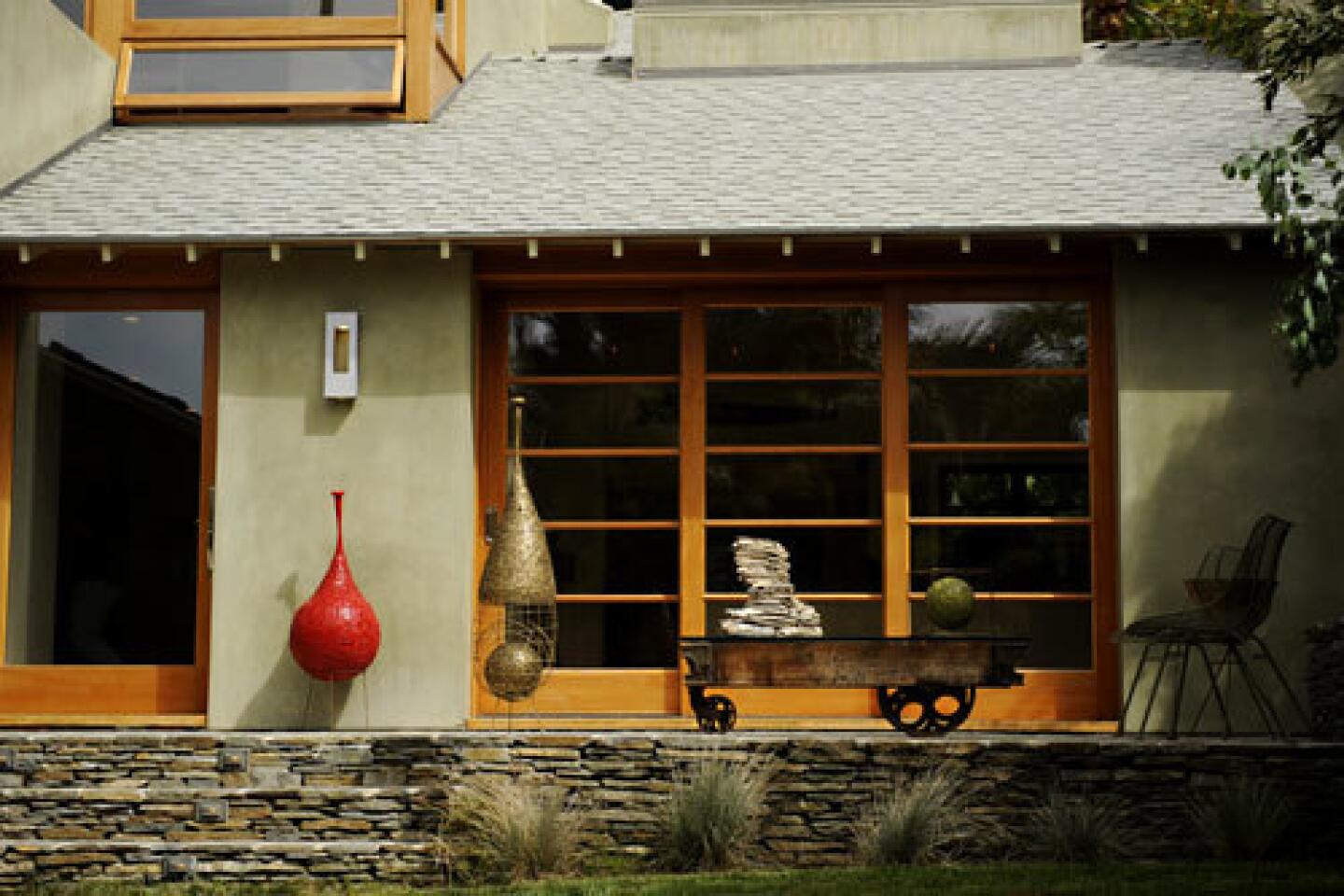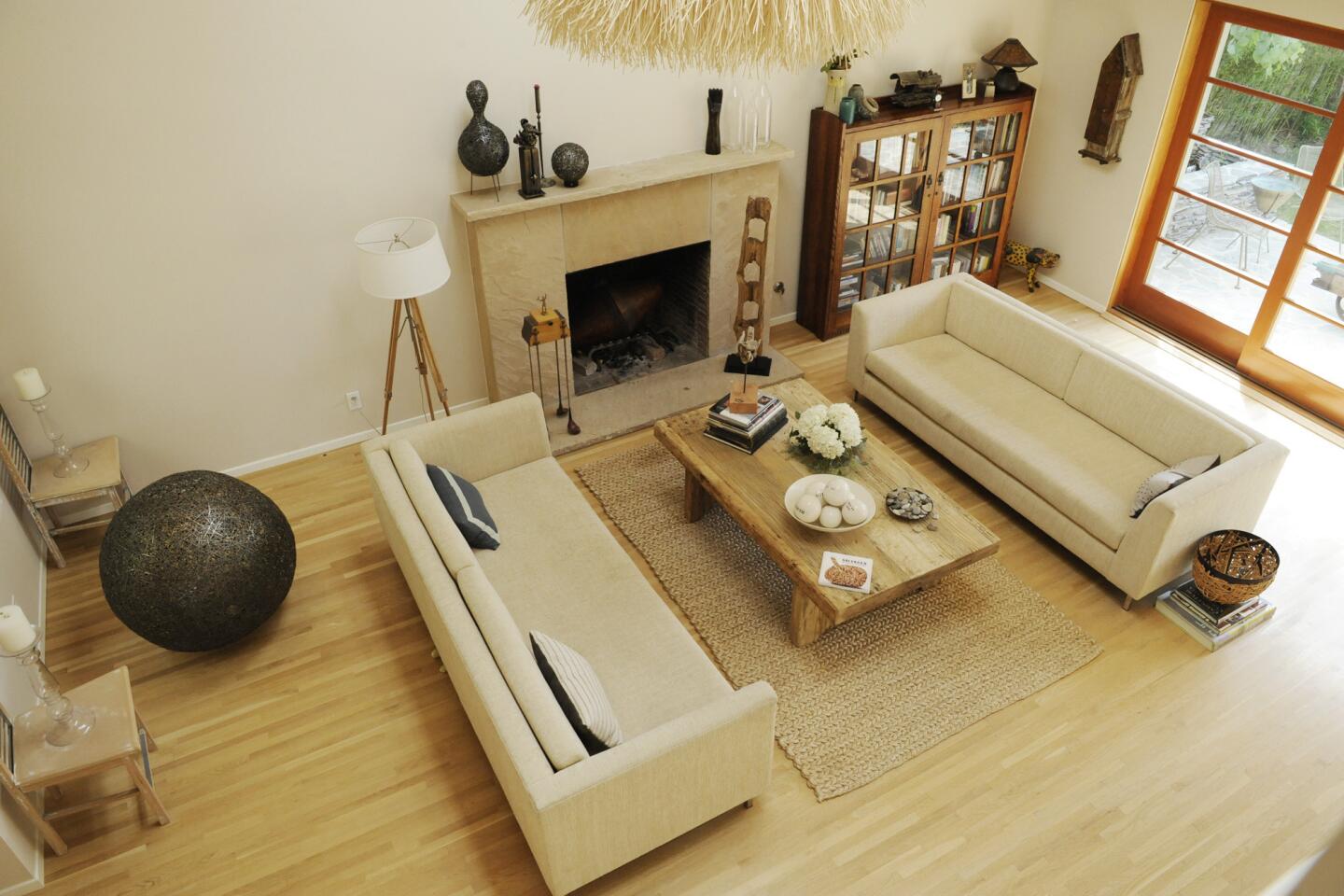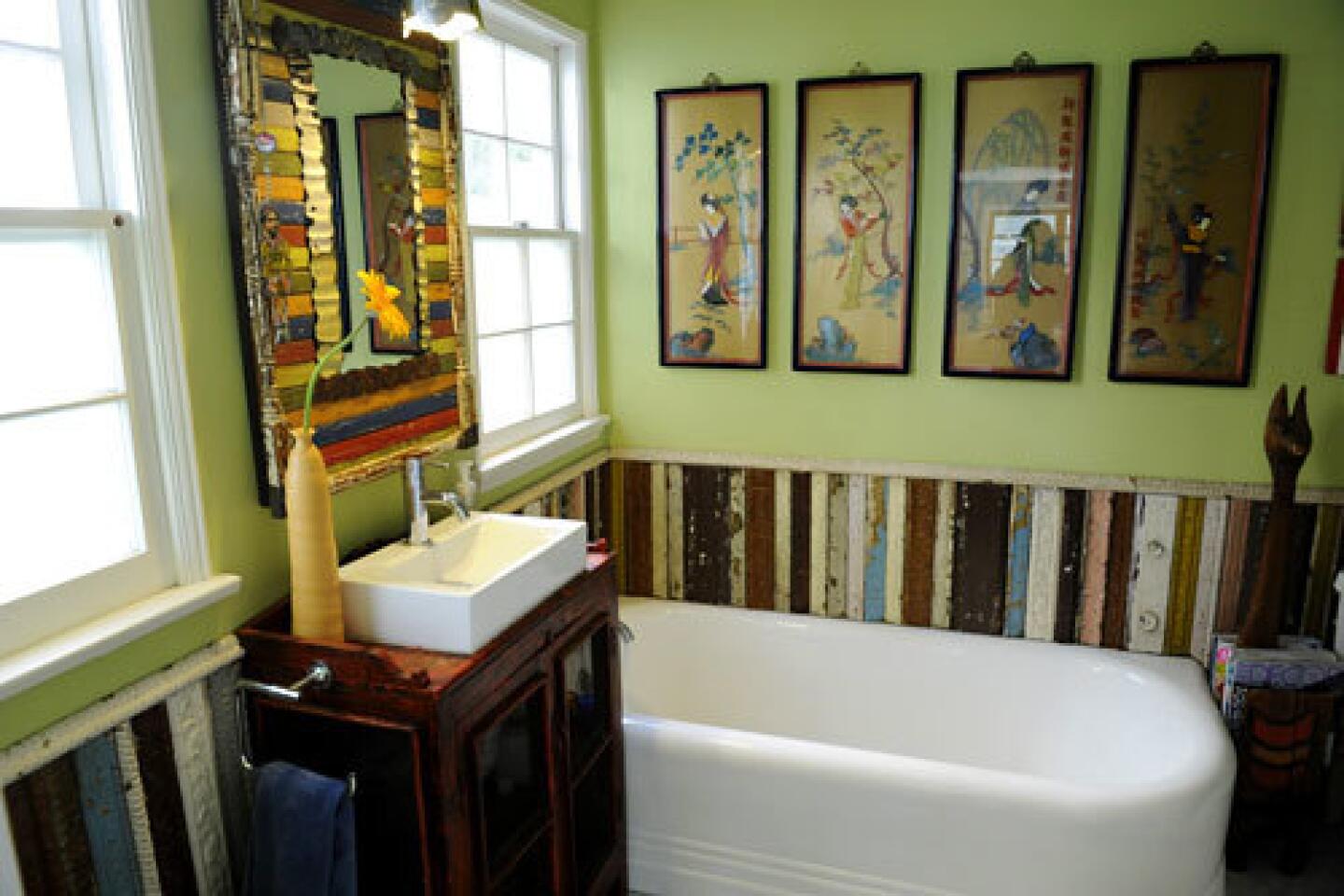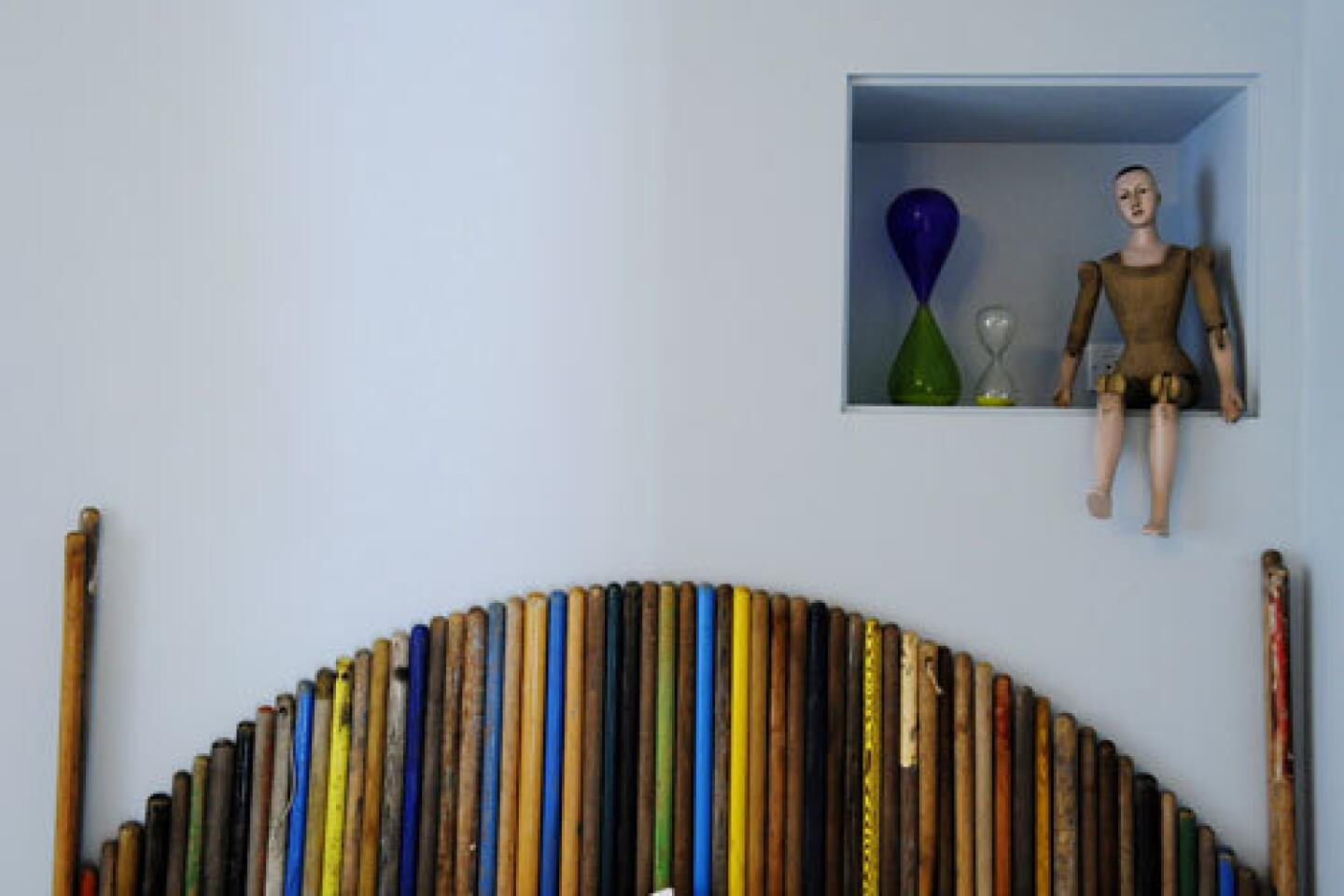It’s in the details
- Share via
As a sculptor and industrial designer working with found objects and castoffs, Aaron Kramer has a simple credo: “Trash is the failure of imagination.” The artist, subject of “Salvaged: Aaron Kramer and the Secret Life of Objects” at the Craft and Folk Art Museum in Los Angeles through Sept. 12, also applied that philosophy to the renovation and decoration of his Santa Monica home.
Plunked between a 1930s movie-star mansion designed by Richard Neutra and a residence by the contemporary architect Melinda Gray, Kramer’s 1936 house was, he says, “a mish-mash, a blend of Cape Cod cottage with a little Santa Fe flair and New York loft details.” In the 1990s, it was occupied by Frederick Fisher, architect of the Annenberg Community Beach House in Santa Monica.
By 2002, however, the desirable hilltop lot was on the market as a likely teardown, Kramer says. He and wife Joan bought it with their daughter Emma in tow and another daughter, Anna, on the way.
“We thought it had bones and good features; there was so much to save,” says Kramer, who often has used vintage millwork in his art works.
Working with Glynn Design Build in 2007 and ‘08, the Kramers blew out walls to enlarge rooms and opened up ceilings, exposing X-braced floor joists over the dining room. Douglas fir beams were removed and repurposed as casements for French doors leading from the master bedroom to an ocean-view terrace. The couple pushed the recessed front door forward and replaced a clapboard-clad bay window in the living room with sliding doors, unifying the facade into one sleek, stucco plane. To display artwork inside, Kramer added nooks in walls.
“Every gap between the studs was an opportunity for a niche,” says Kramer, who has sold work to musician Carlos Santana, actress Rene Russo and the Sofitel hotel in Los Angeles, which has a sculpture made of woven street-sweeper bristles.
“We put money into the stuff you could really see, and the details that made sense we retained,” Kramer says, adding that they kept old sash windows and re-hung all the original doors. “We didn’t want to make it too perfect.”
They also couldn’t have a home where they worried over every ding or dent: “With kids and our dog, Roscoe, that’s inevitable.”
The home is appointed in a handsome mélange of styles: Arts and Crafts bookcases and chests, contemporary sofas and reclaimed wood and industrial furniture. “If it was bigger than a breadbox, it had to be agreed upon by both of us,” Kramer says of decorating with his wife, who found pieces at Anthropologie, Z Gallerie, flea markets and catalogs including Wisteria.
The most eye-catching elements are Kramer’s hat blocks, lodge banners and other collected objects, as well as artistic designs of his own invention.
He created a pendant light by weaving coffee stirrers and hung it over a Scandinavian table surrounded by Thonet bentwood chairs. In the powder room, the artist installed a wainscoting made from architectural salvage found in his native Chicago. He also assembled discarded wooden broomstick handles into a headboard for a guest bedroom.
Viewers experience his work in stages, Kramer says. They see the design, then they see the craft, and then they note the recycled materials.
“You could apply that to this house,” he says. “The initial impression is that it’s a nice, clean, modern home, then you start to notice the details and how it’s put together, and then, hopefully, you realize that the wainscoting is made out of moldings from old buildings and the headboard is made from broomsticks. That is at the core of my work.”
Here, Kramer guides a visual tour through his home, with edited commentary in his own words.































